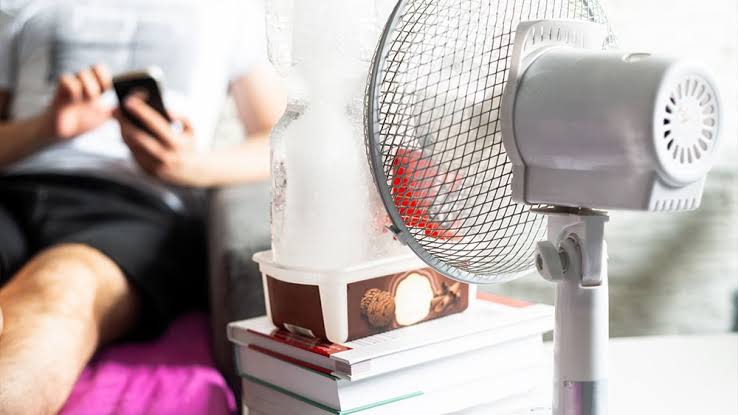As summer days stretch ahead, bringing with them soaring temperatures, keeping your home cool becomes paramount. Effective cooling strategies not only provide comfort but can also significantly reduce energy bills. From optimizing your home’s airflow to integrating smart technology, several techniques can be employed to keep the heat at bay. In this article, we’ll explore various methods to maintain a pleasant living environment throughout the hottest season. Keep reading for some cool insights.
Maximizing Air Circulation to Maintain a Cool Indoor Environment
Good air circulation is crucial for maintaining a cool home during summer. Ceiling fans should be set to rotate counterclockwise, creating a wind-chill effect that can make rooms feel cooler. Additionally, strategically placed floor or table fans help in distributing cool air throughout the space, especially in spots without adequate natural airflow.
During cooler hours, like early morning or late evening, opening windows can allow for cross-ventilation, ushering fresh, cool air into your home and pushing out the hot air. Be sure to close the windows as the day heats up to trap the cooler air inside. For homes without central air conditioning, window-mounted or portable AC units can be lifesavers, specifically when used in the most frequented rooms.
Another way to promote cooler indoor temperatures is to minimize appliance use during peak heat hours. Appliances such as ovens and dryers generate considerable amounts of heat, which can raise your home’s internal temperature. Plan to use these appliances during cooler times of the day or opt for outdoor grilling and air-drying clothes to prevent excess heat generation.
When you do need your air conditioning system, regular maintenance is key to efficiency. Thomas HVAC Services recommends seasonal check-ups to ensure your system is running optimally and effectively distributing cool air throughout your home without unnecessary energy expenditure.
The Impact of Shading and Window Treatments on Home Temperatures
Excessive sunlight streaming through windows can significantly increase indoor temperatures. To combat this, installing shading devices such as awnings, pergolas, or leafy trees can block direct sunlight, especially on the southern and western exposures of your home. These shade providers act as a natural barrier, preventing heat from entering your living spaces.
Window treatments such as blinds, drapes, and curtains contribute immensely to reducing indoor heat gain. They serve as an additional layer of insulation, keeping rooms cooler during the day when closed. For windows facing the sun’s path, reflective blinds or blackout curtains can be particularly effective in combating heat, while skylight blinds offer an excellent solution for managing temperature and light in spaces with overhead windows.
One of the most innovative window treatment solutions includes Highlands Ranch UV protection Zipper shades. These shades not only block harmful UV rays but also help maintain cooler indoor temperatures by creating a physical barrier against sunlight.
Smart Thermostat Settings for Optimal Cooling Efficiency
A smart thermostat is a vital tool for maintaining a comfortable and energy-efficient home. Proper thermostat setting is a balancing act; you want to keep your home comfortably cool without overworking your AC unit. The Department of Energy recommends setting your thermostat to 78 degrees when you’re at home and raising it higher when you’re away.
Smart thermostats can learn your schedule and temperature preferences, automatically adjusting to energy-saving temperatures when you’re asleep or away. They also enable you to control your home’s temperature remotely using a smartphone app, ensuring you return to a cool environment without leaving the air conditioner running all day.
Advanced features of smart thermostats include energy usage reports, which can help identify patterns and opportunities for further efficiency improvements. By understanding your energy consumption, you can make informed decisions to optimize cooling and reduce costs.
Incorporating Plants and Water Features for Natural Cooling Effects
Placing indoor plants can assist in creating a cooler indoor climate. Plants naturally engage in a process called transpiration, where they release moisture into the air, which can lead to a reduction in the surrounding temperature. Large leafy plants are ideally suited for this purpose, and when strategically placed around a room, they contribute to a cooler and more pleasant living environment.
Outdoor landscaping choices also influence home temperatures. For instance, planting shade trees around your home can provide natural cooling as their broad canopies block sunlight from hitting walls and windows directly, while grass and garden beds absorb less heat than paved surfaces.
Adding water features such as bird baths or small fountains near windows or patios can also support a cooler ambiance. The evaporation of water from these features produces a cooling effect, making nearby outdoor spaces more enjoyable, even during peak temperatures.
Overall, beating the heat requires a multifaceted approach. By maximizing air circulation, utilizing shade and protective window treatments, setting smart thermostats, choosing energy-efficient appliances, and incorporating elements of nature, you can keep your home cool and comfortable throughout the summer.
